By Shane Rowan
The World of Ancient Egypt...
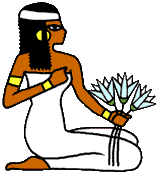
Population:
More than 76 million people live in Egypt. Life expectancy is around 70 years. Birth rate is on average 2.95 per woman. Literacy rate is 68% for men and only 47% for women.
Languages:
Arabic (official), English and French widely understood by educated classes.
Capital
Cairo
the largest city in Africa and the Middle East.
Area
995,450 sq km (384,345 sq mi)
most of which are is desert and desert like area
Population
nearly 70 million
Currency:
Egyptian Pounds (EGP) is the local currency in Egypt.
Language
Main language: Egyptian Arabic
Second language: English
Third language: French
Religion
Muslim and Christian, an estimated 27% of the population are Christians and the rest mainly Muslims
Geography
The Nile
The Nile is the longest river in the world stretching 6695 km (4184 miles). It was used for transportation and for people to live by the river for water supply. The river's current is very strong and deadly. They made boats to bring supplies across the Nile and also to go up and down the river for trade across Africa.
Once a year the Nile will overflow its banks causing the crop to get flooded. Instead of the farmers being angry, they were overjoyed, because they had water for their crops. Egypt is a desert and there's not much water to be spared. This is called inundation, it's a holiday for farmers and other people. They had irrigation so the crops wouldn't dry up in the unbearable desert heat. Back then, everyone didn't have to work on that day when inundation came, instead they would have a feast.
But, in the morning every one has to go back to work.
"The Black Land" was on one side of the Nile and was used to grow crops. It was the only land you could grow crops on. "The Red Land" protected Egypt from armies with its desert sand. It also provided metals and semi-precious stones. The Egyptians melted and then molded the metals into spears and swords and many other weapons, sold them and make a lot of money. make them into sculptures, and there are many other ways that the egyptians used these materials.
An Oasis is an area of land in the desert were there is water. Some oasis's where used to grow crops. One was made into a vineyard and provided wine for the Pharaoh. Some oasis's actually have plant life growing by it, even trees!
The main currency in Egypt is the Egyptian Pound
Egyptian pound |
|||||
|
|||||
Symbol |
£, LE, or ج.م |
||||
Coins |
5, 10, 20, 25, 50 piasters, 1 pound |
||||
Banknotes |
5, 10, 25, 50 piastres |
||||
Central bank |
Central Bank of Egypt |
||||
The Egyptian pound, known in Egyptian Arabic as the gineih.It is the currency of Egypt. It is divided into 100 piastres, or 1000 malleem.
The currency code is EGP. Locally, the abbreviation LE or L.E., which stands for livre égyptienne (French for Egyptian pound) is frequently used. E£ and £E are also much less-frequently used.
The Egyptian Calendar
The Egyptian Calendar has only three seasons
These seasons are…
Akhet was the first season. It lasted from June 21st to October 21st on our calendar. Akhet consisted of four 30 day months.
Proyet was the second season. It lasted from October 21st to February 21st. It also contained four months.
Shomu was the third, and last, season. It lasted from February 21st to June 21st. Like the other seasons, it is four months. Shomu was the season that we call Summer.
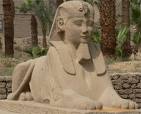 The Sphynx
The Sphynx
The job of the Sphynx was to guard the pyramids which contained the bodies of Pharaohs.


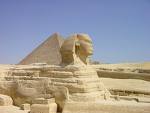
As you can see from the photographs the sphinx was always placed near the pyramids
Pyramids

The Pyramids of Giza:
These massive, 4,000 year old structures have intrigued people for ages. Each of them was constructed by crews of 20,000 to 30,000 men and could take up to 20 years to build! Each pyramid's construction began when a pharaoh took the throne because it had to be finished by the time that he died. These three pyramids were built for the pharaohs Khufu, Khafre, and Menkuare.
The Earliest Pyramid: The first pyramid constructed was built for king Snefru the first in the fourth dynasty. It was built at Dashur to be an indestructible tomb to protect Snefru all throughout the afterlife. Construction: Pyramids were built using huge blocks of quarried limestone. The earlier pyramids had the burial chambers under the pyramid, but when these tombs were easily robbed, the chambers were moved to the heart of the pyramid. |
Hieroglyphics is a system of writing, that the ancient Egyptians used, in which picture symbols were used to represent meaning or sounds or a combination of meaning and sound. Hieroglyphs literally mean “to carve into stone”, and dates back to 3100BC. To the ancient Egyptians writing and art were interconnected and can be seen on walls or stone tablets and monuments. Here are some examples …..
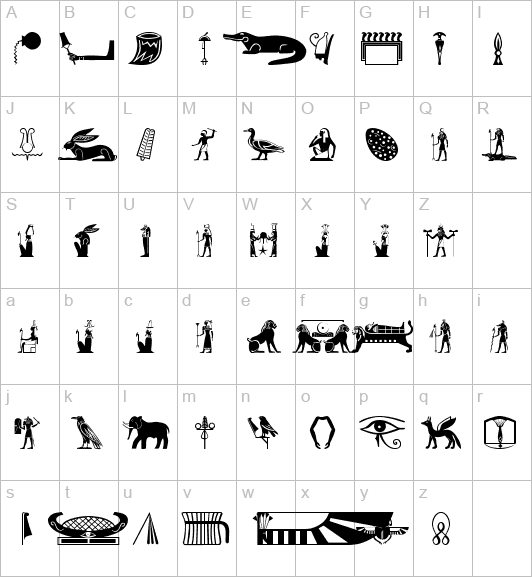
Have a look at the letters in your name… It would take a long time to write a story or even your name in HIEROGLYPHICS!!
Egypt was ruled by people called pharaohs.
Here is the story of Cleopatra, she was one of the most famous Pharohs…….
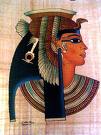
In the spring of around 51 B.C., Ptolemy died leaving the throne to his eighteen year old daughter Cleopatra and her younger brother Ptolemy XIII . Cleopatra was born in Alexandria in 69 B.C. She had two older sisters, one younger sister, and two younger brothers. A according to the Egyptian law, Cleopatra was forced to take consort with either a brother or a son, whatever the age was, it didn't matter. She was married to her younger brother Ptolemy XIII, who was twelve years old. She soon fell in love with Caesar.
The Alexandria wars caused death to her own flesh and blood. Ptomelys XIII soldiers surrounded Caesar's troops around November, 49 B.C. Ptomelys XIII drowned in the Nile trying to flee. Soon her sisters betrayed her. Cleopatra never forgave them and had them killed or some people believe.
Because of her brothers death, Cleopatra was the ruler of Egypt. But now she had to marry her other brother Ptolemy XIV, who was eleven years old. But Cleopatra was still in love with Caesar so they had a 2 month long trip together. Later Cleopatra and Caesar had a son named Caesarian. Caesar claimed Caesarian his son. Other people got upset because they thought that he was going to marry Cleopatra and brake the law. Caesar was killed by his senators is Rome.
Cleopatra was planning on joining with Mark Anthony because the harvest was bad and inundation was low. The thing was that Anthony was married and so he divorced his wife for Cleopatra. After Anthony's death, Cleopatra committed suicide. Her death was the end of egyptian monarchs. Cleopatra was the last great Pharaoh.
Tutankhamun
In 1323 B.C., a very young Egyptian pharaoh died. Tutankhamun, or King Tut as people call him,,is the best known Pharaoh of ancient Egypt. He was most likely to be the son of Akhenaten, a king of the 18th dynasty. His mother was probably Queen Kiya, one of the two wives of Akhenaten. Ankhesenpeeten, his older half sister, became his queen. When he was nine, he sat at the throne in 1333 B.C. He reigned until his death at the age of 17 or 18 years old. Some think that he was murdered and others think that he was deliberately sent into battle and was killed. However his cause of death is unknown. People who believe that he was murdered point at the hole in his skull as evidence. His body was badly preserved so we may never know the true fate of this young, but famous pharaoh. "I see wondrous things" |
The Curse All the men who visited the tomb died. One man died exactly the same time of his pet dog. The weirdest case, was when all the lights in the hotel went off. People heard a shrill scream. Then the lights came back on. They rushed to the room where the scream originated. They found an archaeologist dead. Not a single puncture wound or any signs of being choked to death. Just a dead man. He is the only one who knows what happened. Howard Carter was the only one who lived to be about 74 years old. That is the the story of the Pharaohs Curse. |
Tutenkamun
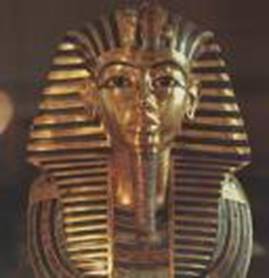
Tutenkamuns mask
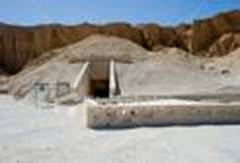
His tomb

His feet
The Great Egyptians
The Great Egyptians were very complex and built the Legendary…
1. Pyramids Of Giza
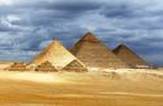
2. The Great Sphinx

3. Canopic Jars

The Egyptians Worshiped Many Gods Such As…
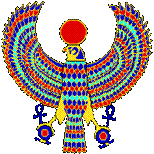
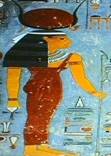
God of |
Name |
Appearance |
Sun |
Ra |
head of falcon and sun disk |
Music |
Hathor |
horns of cow and sun disk |
Destruction |
Sekhmet |
head of lion |
Sky |
Nut |
blue with golden stars |
Earth |
Geb |
colour of plants and Nile mud |
Dead |
Osiris |
dressed in white with crook and flail |
Desert |
Seth |
animal head with long curved snout |
Pharoah |
Horus |
head of hawk and crown of Egypt |
Magic |
Isis |
throne on head or holding baby |
Wisdom |
Thoth |
head of ibis |
Embalming |
Anubis |
head of jackal |
Justice |
Ma'at |
feather in her hair |
Creation |
Amun |
crowned with feathers |
Cats |
Bastet |
head of cat |
Mummification

The mummification process has two stages. The first one is called embalming. The embalming process cleans the body for the wrapping, the second stage. The wrapping has a number of special steps that must be followed with great care, for if you were being mummified, you must be an extremely important person.
Embalming
|
Wrapping |
Anubis |
Word Scramble Word Scramble
1. The King who built the pyramids of giza - HUKUF
2. A tomb of most early Kings - YRMDIPA
3. First woman Pharaoh - SEHPTUATS
4. Most famous Pharaoh - NMHNTTEAKAU
5. Discverer of King Tut's tomb - DAORWH RTAERC
6. The longest river in the world - ETH EILN
7. The plant that Egyptians use in many cosmetics - NEHAN
8. Cats, bulls, and ______ were enbalmed and buried - SEBIIS
9. Egypt was ruled by kings called __________ - HSRAOAHP
10. The topic of this project - CTNAEIN GPYTE
The End!
Signed : _____________________
Source: http://www.edenderrybns.ie/Projects%20&%20Pupils'%20Work/The%20World%20of%20Ancient%20Egypt.doc
Web site to visit: http://www.edenderrybns.ie/
Author of the text: indicated on the source document of the above text
If you are the author of the text above and you not agree to share your knowledge for teaching, research, scholarship (for fair use as indicated in the United States copyrigh low) please send us an e-mail and we will remove your text quickly. Fair use is a limitation and exception to the exclusive right granted by copyright law to the author of a creative work. In United States copyright law, fair use is a doctrine that permits limited use of copyrighted material without acquiring permission from the rights holders. Examples of fair use include commentary, search engines, criticism, news reporting, research, teaching, library archiving and scholarship. It provides for the legal, unlicensed citation or incorporation of copyrighted material in another author's work under a four-factor balancing test. (source: http://en.wikipedia.org/wiki/Fair_use)
The information of medicine and health contained in the site are of a general nature and purpose which is purely informative and for this reason may not replace in any case, the council of a doctor or a qualified entity legally to the profession.
The following texts are the property of their respective authors and we thank them for giving us the opportunity to share for free to students, teachers and users of the Web their texts will used only for illustrative educational and scientific purposes only.
All the information in our site are given for nonprofit educational purposes
The information of medicine and health contained in the site are of a general nature and purpose which is purely informative and for this reason may not replace in any case, the council of a doctor or a qualified entity legally to the profession.
www.riassuntini.com